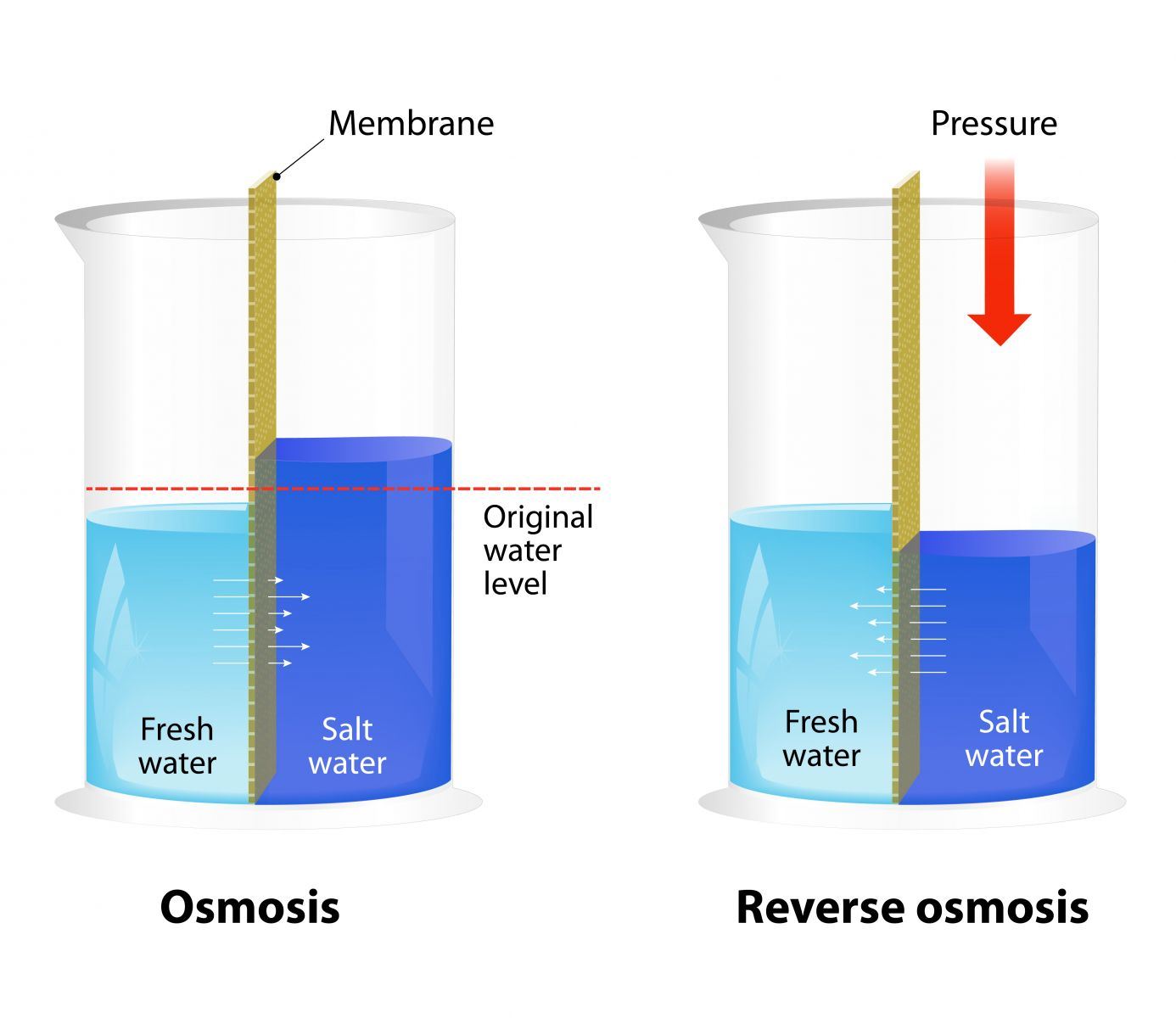
How it started
In 1960, the Federal Government of the United States made an investment of around USD 400 million to the research of reverse osmosis membranes, which were applied to the wastewater recycling system in spaceships. As more and more experts and scholars were involved in the research program, the quality and quantity of RO membranes was significantly enhanced and finally tackled the drinking water challenges of human beings.
Principle of reverse osmosis
Water has a natural tendency to move from a weaker saline solution to a stronger saline solution. This is known as the principle of Osmosis. An example of osmosis is when a plants roots absorb water from the soil.
Reverse Osmosis is the process of Osmois in reverse. By applying pressure, water is forced to move in the opposite direction to the natural osmotic flow. The pore size of a reverse osmosis membrane is 0.0001 microns, one millionth of a human hair in diameter. The sizes of bacteria and vuruses are 5000 times larger than RO membrane pores, so only water molecules can pass through, while other particluate, heavy metals and pesticides are removed and discharged with the concentrate water.
The diagram below outlines the principles of Osmosis and Reverse Osmosis

Where is Reverse Osmosis technology used today?
With the advance of technology and globalisation today, RO systems are readily available throughout the world. For the purpose of this article, we have outlined its application in the healthcare sector.
Dental & Oral Health
Pure, safe water is essential for use in the dental sector for supply to sterilisers and washers to prevent scale build-up and ensure consistent disinfection of instruments. Water used by patients for mouth rinsing should be bacteria-free.
Light Commercial RO Systems provide a reliable source of demineralised water for dental practices, producing high quality deionised water from the municipal supply.
Sterile Services (CSSD)
Water is used to clean instruments and critical components of systems used during operations and procedures. Water supplied for washers should be softened to reduce scaling.
Commercial RO Systems produce high purity water used to produce clean steam for autoclaves.
For more information on reverse osmosis systems, or for assistance with design and refurbishment of water systems, please contact our technical team on 1800 446 500
